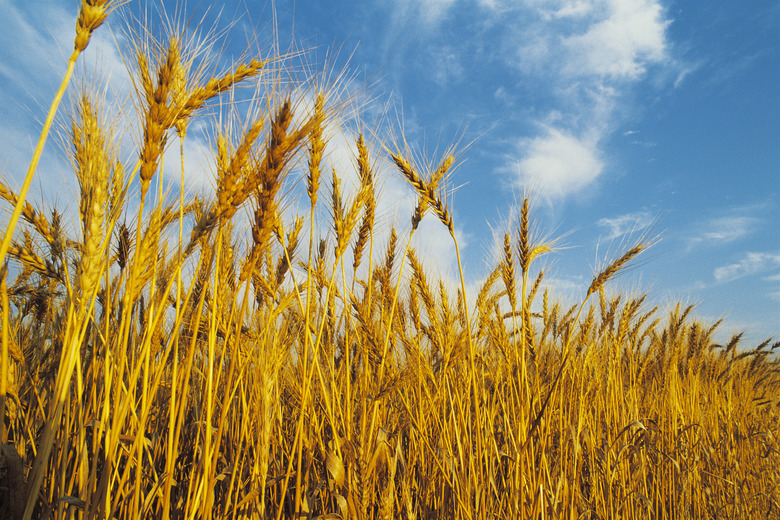What Are The Six Stages Of The Life Cycle Of A Wheat Plant?
The growth of a wheat plant is measured in stages. Understanding the stages of growth is important to help farmers optimize the yield. Stress and drought affect plants differently during each stage of growth. There are many systems used to measure the stages of growth, including Fekes, Zadoks and Haun scales, which are all rather complicated, but there are six basic stages of growth for a wheat plant.
Seedling Stage
Seedling Stage
The first stage of growth in wheat is called the seedling stage. This stage occurs after germination and begins when the first true leaves emerge from the soil, and ends when the first tiller emerges. During the seedling stage the second leaves are just emerging and beginning to unroll, and there are as many as six seminal roots.
Tillering Stage
Tillering Stage
Tillers are new shoots that are sent up from the root of the plant. Each tiller can grow its own stalk and seed head, so the number of tillers will determine the potential yield of the plant. Tillering can occur either before or after the winter dormancy stage in winter wheat, and a plant can have as many as six tillers. Tillers can be distinguished from true leaves by a sheath at the base of the growth called a prophyll.
Jointing Stage
Jointing Stage
The jointing stage starts when the stalk forms its second node, a hard joint from which the plant telescopes upwards. During the jointing stage, the smaller, less-formed tillers often die off. It is important that all the wheat in a field reaches the jointing stage at the same time so that the heads will all be mature at harvest time.
Booting Stage
Booting Stage
During the booting stage, the head of the wheat develops and becomes visible beneath the sheath on the stalk. The booting stage ends when the tips of the head, called awns, begin to emerge.
Heading and Flowering Stage
Heading and Flowering Stage
The heading and flowering stage begins when the awns emerge from the sheath. When the awns have emerged the flowering begins and pollination and fertilization occurs. It is important again during the flowering stage that all the plants in a field flower at the same time. Right after fertilization, the embryo and endosperm begin to form.
Maturity Stage
Maturity Stage
The maturity stage immediately follows fertilization, and includes several short stages. The milk stage is the first part of maturing, and this is when the kernel begins forming. The kernel is fully formed during the dough stage, and the plant takes nutrients from the stalk and leaves and transfers them to the kernel. The kernel is still very moist at the end of the dough stage and contains about 30 percent water. During the ripening stage the kernel loses the rest of its moisture and is ready to be harvested.
Cite This Article
MLA
Adams, Sam. "What Are The Six Stages Of The Life Cycle Of A Wheat Plant?" sciencing.com, https://www.sciencing.com/what-are-the-six-stages-of-the-life-cycle-of-a-wheat-plant-13428191/. 21 July 2017.
APA
Adams, Sam. (2017, July 21). What Are The Six Stages Of The Life Cycle Of A Wheat Plant?. sciencing.com. Retrieved from https://www.sciencing.com/what-are-the-six-stages-of-the-life-cycle-of-a-wheat-plant-13428191/
Chicago
Adams, Sam. What Are The Six Stages Of The Life Cycle Of A Wheat Plant? last modified March 24, 2022. https://www.sciencing.com/what-are-the-six-stages-of-the-life-cycle-of-a-wheat-plant-13428191/
